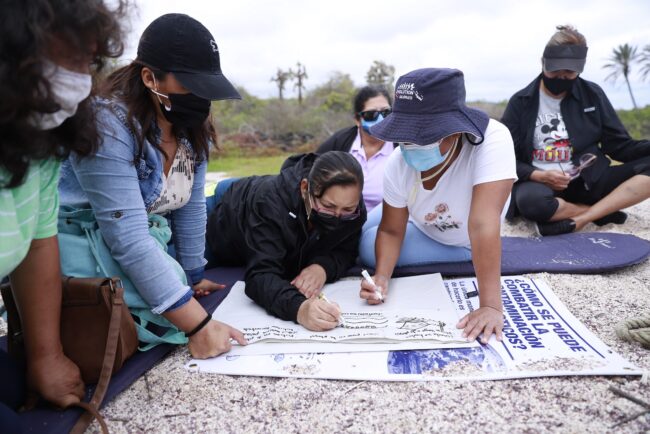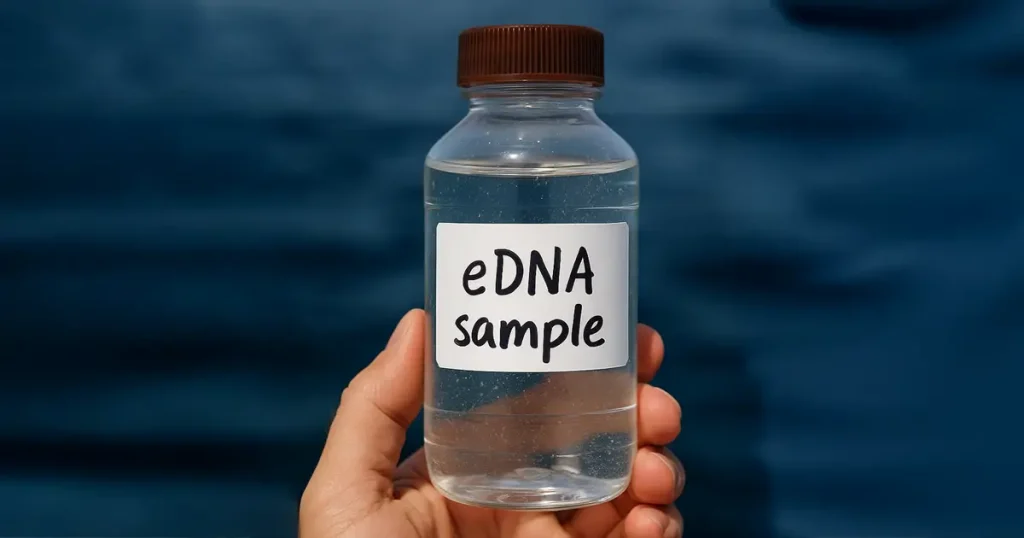A Look Back at Education for Sustainability’s Tenth Teacher Institute
by Richard Knab
It is a pleasure and honor to work with Galápagos teachers and school principals on a daily basis. However, the intensive, non-stop pace of this work makes it easy to lose perspective regarding some of the very important developments that are occurring in the Galápagos education community.
Our recent Teacher Institute, the 10th weeklong training event carried out through the Education for Sustainability Program, provided me the opportunity to step back and to appreciate the level of professionalism and purpose that Galápagos educators are demonstrating these days, and the creative and impactful strategies they are employing with their students. I am so very impressed.

This institute focused squarely on helping teachers to implement the new Contextualized Curriculum for Galápagos (CCG) that was launched by Ecuador’s Ministry of Education in June. The CCG centers learning around three pillars of sustainability: economy, society, and nature, and 14 themes, such as food security, transportation, energy, biodiversity, and social inclusion. The curriculum also mandates the use of Project-Based Learning (PBL)—a type of experiential learning that engages students in learning cycles in which they explore real-world problems—with teachers serving as expert coaches and guides in the learning process.
While this was our second virtual Institute, it involved a lot of “firsts.” This was the first time that a team of teacher-leaders trained by the program helped to design and deliver an Institute. It was the first time we used a web-based educational platform, Google Classroom, to deliver training for all 400 participants. And it was the first time that over a dozen local experts and environmental educators were closely involved, helping teachers to validate and refine six-week, interdisciplinary teaching plans focused on different aspects of the threat posed by invasive species in the islands.

A high level of community involvement and collaboration is essential for effective implementation of the new curriculum, and the Institute provided a perfect opportunity to model how this can work. In addition to the technical input provided by invasive species experts, Ecology Project International Galápagos (EPI) coordinated the design and implementation of 23 field trips on four islands through which environmental educators from EPI, the Galápagos National Park Directorate Service, the Universidad San Francisco de Quito, the Galápagos Biosecurity Agency, the Municipality of Santa Cruz, the Charles Darwin Foundation, the Jototoco Foundation and the Galápagos Education and Research Alliance (GERA) modeled best practices in experiential learning.
As I write, every one of the 7,300 preK-12 students in Galápagos is participating in the second week of the interdisciplinary units teachers developed during the Institute. Students are exploring different aspects of invasive species while carrying out projects that will be shared with and validated by different members of the community at the end of the units. Many students have already participated in engaging outdoor experiential learning activities related to invasive species.
In the words of one of the teacher-leaders involved in the Institute design, “Implementing project-based learning and contextualizing learning is an exciting and rewarding process that has helped me grow professionally. I know that this kind of education will result in much more interesting, relevant and impactful learning for our students.”
This is a busy and exciting time for Galápagos teachers and students. Many schools in the Islands are beginning to open for in-person classes, as contextualized teaching and learning are occurring on an unprecedented scale. And teachers are rising to the challenges posed by the new curriculum with determination and motivation that was documented by a survey conducted at the end of the Institute. At a time when so many places around the world are experiencing unprecedented levels of teacher frustration and dissatisfaction, over 80% of Galápagos teachers reported higher levels of motivation now than just prior to the Covid-19 pandemic.
This high level of teacher motivation and skill tells me that we are making real progress towards our goal of transforming teaching and learning in ways that ensure that young people in Galápagos graduate from high school with a deep appreciation for the special place they live and the skills, knowledge, and desire to contribute to building a more sustainable Galápagos.
Richard Knab
Director of Strategic Partnerships
Galápagos Conservancy
—
Richard Knab, Galápagos Conservancy’s Director of Strategic Partnerships, led the design and now oversees implementation of the Education for Sustainability Program, which is implemented by Galápagos Conservancy and the Galápagos-based Fundación Scalesia in partnership with Ecuador’s Ministry of Education. The recent Teacher Institute was made possible by the following generous and dedicated donors: Kirke Lathrop, Judie Muggia, Gretchen Bauta, Kathleen Diamond, Sally Kleberg, Janice Schwab, Ed and Judy Schwartz, the Lindblad-National Geographic Fund, Manitou Fund, Ecology Project International and Acción Nativa.



